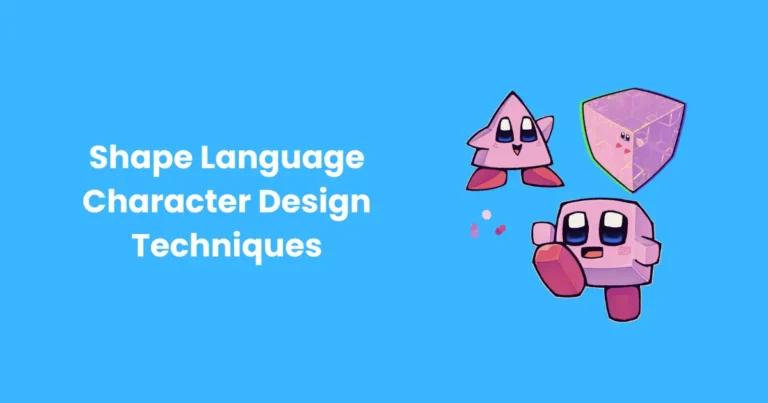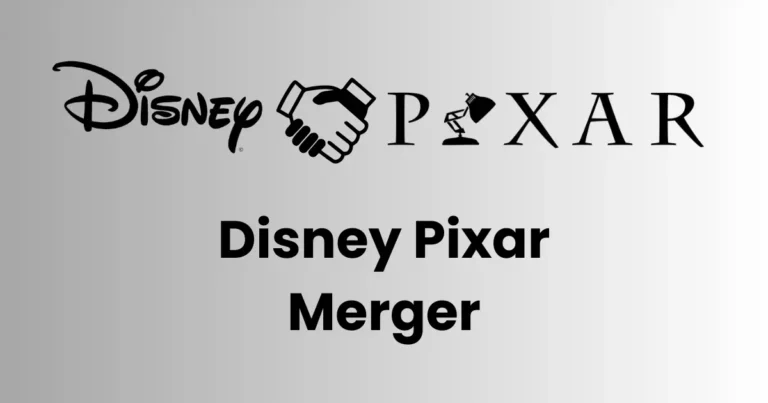Are Animators in High Demand? | Popular Animators jobs and opporunities in 2025 and future

Contents
- 1 The Growing Popularity of Animation
- 2 Key Industries: Where Are Animators in High Demand?
- 3 Global Trends Impacting Animator Demand
- 3.1 1. The Rise of Streaming Platforms
- 3.2 2. Explosion of Video Game Culture
- 3.3 3. Cross-Border Collaboration and Outsourcing
- 3.4 4. Increased Use of AR and VR
- 3.5 5. Integration of AI and Automation in Animation
- 3.6 6. Digital Marketing Transformation
- 3.7 7. Emerging Animation Markets
- 3.8 8. Sustainability and Animation
- 3.9 9. Growth of E-Learning and EdTech
- 4 Skills and Specializations in Demand
- 4.1 1. Mastery of Animation Styles
- 4.2 2. Motion Graphics and Visual Effects (VFX)
- 4.3 3. Storyboarding and Pre-Production Skills
- 4.4 4. Character Design and Rigging
- 4.5 5. Specialized Industry Skills
- 4.6 6. Software Proficiency
- 4.7 7. Creativity and Artistry
- 4.8 8. Knowledge of Emerging Technologies
- 4.9 9. Communication and Collaboration
- 5 Challenges in the Animation Industry
- 5.1 1. Intense Competition
- 5.2 2. High Skill Demands
- 5.3 3. Tight Deadlines and Long Hours
- 5.4 4. Cost of Equipment and Software
- 5.5 5. Balancing Creativity and Client Expectations
- 5.6 6. Impact of Automation
- 5.7 7. Job Instability
- 5.8 8. Intellectual Property Issues
- 5.9 9. Rapid Technological Changes
- 5.10 10. Geographic Disparities: Where Are Animators in High Demand?
- 6 Strategies to Overcome Challenges
- 7 Future Job Market for Animators
- 7.1 1. Increased Demand Across Industries
- 7.2 2. Role of Emerging Technologies
- 7.3 3. Growth of Streaming Platforms
- 7.4 4. Video Games and E-Sports Expansion
- 7.5 5. Focus on Sustainable Animation Practices
- 7.6 6. Outsourcing and Global Collaboration
- 7.7 7. Freelancer Opportunities
- 7.8 8. Challenges of Automation
- 7.9 9. Expanding Markets for Educational Content
- 7.10 10. Increased Specialization
- 8 Predictions for the Future Job Market
Animation has become an integral part of our daily lives, extending far beyond traditional cartoons or blockbuster movies. From immersive video games to eye-catching advertisements, the animation plays a vital role in captivating audiences and conveying complex ideas with ease. With its widespread application across industries such as entertainment, education, and even healthcare, many aspiring creatives are asking a crucial question: Are animators in high demand?
The answer lies in understanding how animation has evolved and its growing significance in a digital-first world. As technological advancements continue to revolutionize the field, companies are seeking skilled animators to bring their visions to life. This article dives into the current demand for animators, the industries driving this growth, and what the future holds for this exciting career path.
The Growing Popularity of Animation
Animation has transcended its traditional boundaries, emerging as a powerful tool for storytelling, education, and innovation. The digital era has amplified its reach, making it a vital component of numerous industries.
- Entertainment Industry Expansion
Animation has always been a cornerstone of entertainment, with blockbuster movies and TV series often relying heavily on animated visuals. Animated films, such as Frozen and Spider-Man: Into the Spider-Verse, have captivated global audiences, driving massive box office revenues. Streaming platforms like Netflix, Disney+, and Amazon Prime have further increased the demand for high-quality animated content to cater to their diverse audiences. - Gaming Industry Boom
The gaming industry has experienced exponential growth, with animators playing a crucial role in designing realistic characters, environments, and immersive experiences. The rise of augmented reality (AR) and virtual reality (VR) gaming has created even more opportunities for skilled animators to innovate and shape this dynamic medium. - Digital Marketing and Advertising
Brands are turning to animation to craft engaging and memorable content in an increasingly competitive digital landscape. Animated explainer videos, social media campaigns, and interactive advertisements allow businesses to connect with their audiences effectively. - Educational and Training Applications
Animation is revolutionizing education by simplifying complex concepts through visual storytelling. E-learning platforms and corporate training programs often use animated videos and simulations to enhance comprehension and retention. - Technological Advancements
Innovations in 3D modeling, motion capture, and artificial intelligence (AI) have expanded the scope of animation, making it more accessible and efficient. These technologies have fueled the demand for animators who can blend creativity with technical expertise.
With its growing popularity across multiple sectors, animation has solidified its place as a vital and versatile medium. This rising demand highlights the opportunities awaiting animators in a fast-paced and ever-evolving industry.
Key Industries: Where Are Animators in High Demand?
The demand for animators continues to grow, fueled by diverse industries that rely on animation to captivate audiences, convey information, and create immersive experiences. Below are the key industries propelling the need for skilled animators:

1. Film and Television
Animation has become a staple in the entertainment industry, from animated movies and TV shows to CGI-laden blockbusters. Studios like Disney, Pixar, and DreamWorks consistently push the boundaries of animation, while streaming platforms such as Netflix and Hulu compete for original animated content. This constant demand drives the need for talented animators who can create compelling characters, vibrant worlds, and engaging visual effects.
2. Video Game Development
The gaming industry is one of the largest and fastest-growing sectors relying on animation. Animators play a crucial role in designing lifelike characters, realistic movements, and immersive environments. With the rise of virtual reality (VR) and augmented reality (AR) games, the need for animators skilled in cutting-edge technologies like 3D modeling and motion capture has skyrocketed.
3. Digital Marketing and Advertising
Businesses are leveraging animation to make their marketing campaigns more dynamic and engaging. From animated explainer videos and product demos to eye-catching social media ads, animators help brands stand out in a crowded marketplace. The interactive and entertaining nature of animation makes it an indispensable tool for digital marketing.
4. Augmented Reality (AR) and Virtual Reality (VR)
AR and VR technologies are transforming industries ranging from real estate to healthcare. Animators are essential in building immersive virtual environments and interactive experiences. For instance, architects use VR walkthroughs to showcase projects, while medical professionals rely on animated simulations for training and diagnosis.
5. Education and E-Learning
The education sector is increasingly turning to animation to make learning more accessible and enjoyable. Animated videos simplify complex subjects, while gamified e-learning platforms use animation to keep students engaged. This trend is prevalent in K-12 education, corporate training, and even professional certifications.
6. Medical and Scientific Visualization
In healthcare and research, animation is used to create accurate simulations of bodily processes, medical procedures, and scientific concepts. These visualizations help doctors, researchers, and educators communicate complex ideas to patients and students effectively.
7. Architecture and Real Estate
Animation is transforming how projects are presented in architecture and real estate. Animators create 3D walkthroughs, animated blueprints, and virtual staging that allow clients to visualize properties before they are built or remodeled.
8. Social Media and Content Creation
With the growing popularity of platforms like Instagram, YouTube, and TikTok, animators are in high demand to create bite-sized, engaging content that goes viral. From GIFs and animated stickers to full-fledged storytelling videos, animation has become a key element in modern content strategies.
These industries demonstrate the versatility and relevance of animation in today’s world. As animation continues to be embraced across various domains, the demand for animators will only rise, offering a wealth of opportunities for creative professionals.
Global Trends Impacting Animator Demand
The demand for animators is shaped by evolving global trends that are redefining the creative and digital industries. These trends highlight how animation has become a vital tool across sectors, influencing job opportunities and reshaping the profession’s landscape.
1. The Rise of Streaming Platforms
Global streaming giants like Netflix, Disney+, and Amazon Prime are investing heavily in original animated content. From family-friendly shows to adult-oriented animated series, the diverse genres on these platforms have created a constant need for skilled animators. International collaborations and localization of content have further expanded the global reach of animated productions.
2. Explosion of Video Game Culture
The gaming industry, valued at over $200 billion, is a major driver of animator demand. E-sports, mobile gaming, and innovations in virtual and augmented reality have amplified the need for animators capable of designing immersive worlds and lifelike characters. As gaming gains popularity worldwide, studios increasingly rely on animators to deliver visually stunning experiences.
3. Cross-Border Collaboration and Outsourcing
Animation outsourcing to countries like India, the Philippines, and South Korea has become a norm for cost-effective production. These countries are animation hubs, offering opportunities for freelancers and studios to collaborate on international projects. Globalization has also facilitated knowledge exchange, raising the quality and efficiency of animated productions.
4. Increased Use of AR and VR
The growing adoption of augmented reality (AR) and virtual reality (VR) in industries such as real estate, healthcare, and retail has created new opportunities for animators. From VR training simulations to AR-enabled shopping experiences, animators are crucial in crafting interactive and immersive digital environments.
5. Integration of AI and Automation in Animation
Technological advancements in artificial intelligence (AI) are changing how animation is created. AI-powered tools can speed up repetitive tasks like rendering or motion capture, allowing animators to focus more on the creative aspects. However, this shift also emphasizes the importance of upskilling to remain relevant in a partially automated workflow.
6. Digital Marketing Transformation
Digital marketing campaigns now rely heavily on animated visuals to capture attention. Short, engaging animated ads are preferred across social media platforms, leading to a surge in demand for animators who can deliver quick-turnaround projects tailored to various audiences and trends.
7. Emerging Animation Markets
As countries like China, India, and Brazil increase their production of animated content, the global demand for animators grows. These emerging markets are not only creating content for local audiences but also collaborating on international projects, further expanding opportunities.
8. Sustainability and Animation
With growing awareness around sustainability, many brands are turning to animation as an eco-friendly alternative to live-action production. Animated advertisements, product demos, and virtual events reduce the environmental impact while maintaining high visual quality.
9. Growth of E-Learning and EdTech
The global shift to online education has made animation a crucial component of e-learning platforms. Animators are needed to create interactive modules, gamified lessons, and educational videos that enhance learning experiences.
Global trends like the rise of streaming platforms, gaming culture, and the integration of AR/VR and AI underscore the importance of animation in today’s digital landscape. These developments ensure that animators remain in high demand across industries, offering ample opportunities for those willing to adapt to new technologies and market needs.
Skills and Specializations in Demand
The animation industry is evolving rapidly, requiring animators to develop a mix of technical expertise, artistic creativity, and niche specializations to stay competitive. Below are the key skills and specializations driving demand in the field.

1. Mastery of Animation Styles
- 2D Animation: Classic 2D animation remains relevant in television, indie films, and educational content. Skills in frame-by-frame animation and tools like Toon Boom Harmony are highly valued.
- 3D Animation: Modern industries like gaming, film, and advertising heavily rely on 3D animation. Proficiency in creating lifelike characters, objects, and environments is essential for animators working with tools like Blender, Maya, or Cinema 4D.
2. Motion Graphics and Visual Effects (VFX)
Motion graphics and VFX play a critical role in advertisements, movies, and digital marketing. Animators with expertise in creating dynamic motion designs or integrating effects into live-action footage using software like After Effects and Houdini are in high demand.
3. Storyboarding and Pre-Production Skills
Strong storytelling skills are crucial for animators involved in pre-production. Storyboarding helps visualize concepts and define the flow of animations. Proficiency in tools like Storyboard Pro or manual sketching is highly sought after in animation studios and marketing agencies.
4. Character Design and Rigging
Creating believable characters and enabling their movements through rigging is a vital skill for both 2D and 3D animators. Expertise in character modeling, rigging systems, and skin weighting (using software like Autodesk Maya or Blender) makes animators indispensable in the entertainment and gaming industries.
5. Specialized Industry Skills
- Gaming: Knowledge of real-time rendering engines like Unreal Engine or Unity is critical for animators working in video game development.
- AR/VR: Animators focusing on AR and VR projects need skills in creating immersive experiences using 3D modeling and interactive design techniques.
- Medical and Scientific Animation: Animators specializing in medical or technical fields must have a knack for precision and the ability to translate complex data into accessible visuals.
6. Software Proficiency
- Autodesk Maya and 3ds Max: Widely used for 3D modeling, rendering, and animation.
- Blender: A free yet powerful tool gaining traction in various industries.
- Adobe Suite: Tools like After Effects, Animate, and Photoshop are staples for motion graphics and 2D animation.
- Houdini: Essential for creating advanced visual effects and simulations.
7. Creativity and Artistry
While technical skills are essential, creativity is at the heart of great animation. Animators need strong artistic abilities, including sketching, color theory, and composition, to design characters and scenes that captivate audiences.
8. Knowledge of Emerging Technologies
- Artificial Intelligence (AI): Understanding AI tools that automate tasks like lip-syncing or motion capture can improve workflow efficiency.
- Real-Time Animation: Skills in real-time rendering engines are increasingly vital, especially in gaming and live entertainment.
9. Communication and Collaboration
Animation projects often involve large teams, including directors, writers, and developers. Strong communication skills help animators align their work with project goals and ensure smooth collaboration.
Aspiring animators should focus on developing both their creative and technical skills to meet industry demands. By mastering specialized tools and techniques while staying updated on emerging technologies, animators can position themselves for success in this ever-evolving field.
Challenges in the Animation Industry
While the animation industry offers exciting opportunities, it also presents unique challenges that animators must navigate to succeed. These obstacles often stem from the industry’s fast-paced nature, technological advancements, and high expectations for quality and innovation. Below are some of the most prominent challenges animators face.

1. Intense Competition
The popularity of animation as a career has led to a highly competitive job market. Aspiring animators often find it challenging to stand out in a crowded field, especially with experienced professionals and freelancers from global markets competing for the same roles.
2. High Skill Demands
The animation industry demands a combination of technical proficiency and artistic creativity. As technologies evolve, animators must constantly upskill to stay relevant. Mastery of multiple software tools, techniques like motion capture or rigging, and emerging trends like AR/VR are often expected, which can be overwhelming for professionals.
3. Tight Deadlines and Long Hours
Animation projects often have rigid deadlines, leading to long working hours. The pressure to deliver high-quality work within tight timeframes can result in burnout, particularly during the crunch periods leading up to project delivery.
4. Cost of Equipment and Software
Animation requires specialized hardware and software, which can be expensive. Independent animators and freelancers may struggle to afford cutting-edge tools like high-performance computers, rendering software, or premium licenses for industry-standard programs like Autodesk Maya or Adobe Creative Suite.
5. Balancing Creativity and Client Expectations
While animators are creative professionals, they often have to work within strict guidelines and client specifications. The need to align artistic vision with commercial objectives can stifle creativity and lead to frustration.
6. Impact of Automation
Advancements in artificial intelligence (AI) and automation are transforming the animation industry. While these technologies streamline workflows, they also reduce the need for manual tasks like rigging or in-between, potentially threatening jobs for entry-level animators.
7. Job Instability
The animation industry is heavily project-based, and many animators work on short-term contracts. This lack of stability can be a significant challenge, especially for freelancers and independent animators who must constantly secure new projects to sustain their income.
8. Intellectual Property Issues
Protecting original creations in a digital world is challenging. Animators, particularly freelancers, may face difficulties ensuring their work isn’t used without proper credit or compensation.
9. Rapid Technological Changes
The fast-paced development of animation technologies can be a double-edged sword. While these innovations offer new opportunities, they also demand continual learning and adaptation. Animators who fail to keep up may find their skills becoming obsolete.
10. Geographic Disparities: Where Are Animators in High Demand?
Animation hubs like the United States, Japan, and South Korea dominate the industry, making it challenging for animators in other regions to access high-paying jobs or advanced training. Outsourcing trends can also lead to wage disparities, with animators in some countries earning significantly less than their counterparts elsewhere.
Strategies to Overcome Challenges
- Continuous Learning: Staying updated with industry trends and tools helps animators maintain a competitive edge.
- Networking and Collaboration: Building professional connections can lead to more stable job opportunities.
- Time Management: Developing strong organizational skills can help manage deadlines and reduce burnout.
- Freelancing Platforms: Online platforms like Upwork and Fiverr offer opportunities for animators to find projects globally, increasing job prospects.
Despite its challenges, the animation industry remains a rewarding field for those passionate about storytelling and visual art. By addressing these obstacles through continuous learning, adaptability, and resilience, animators can carve a successful path in this dynamic industry.
Future Job Market for Animators
The animation industry is poised for significant growth as technological advancements and creative demands continue to shape the global economy. The future job market for animators offers immense potential but will also require professionals to adapt to evolving trends and innovations. Here’s a detailed look at what the future holds for animators.

1. Increased Demand Across Industries
Animation is no longer confined to entertainment. Its applications are expanding into industries such as healthcare, education, advertising, and real estate. As these sectors increasingly adopt animated content for communication, training, and marketing, the need for skilled animators will grow exponentially.
2. Role of Emerging Technologies
Technologies like artificial intelligence (AI), augmented reality (AR), virtual reality (VR), and machine learning are revolutionizing animation. Future animators will need expertise in integrating these technologies into their work:
- AI Tools: Automation of tasks like rendering and rigging will increase efficiency, but animators will need to focus more on creativity and storytelling.
- AR and VR: These immersive technologies are creating a demand for 3D animators skilled in crafting interactive experiences.
3. Growth of Streaming Platforms
Streaming services like Netflix, Disney+, and Amazon Prime are set to continue their heavy investments in animated series and movies. With animation being a global medium that transcends language barriers, streaming platforms are targeting international audiences, further driving demand for animators worldwide.
4. Video Games and E-Sports Expansion
The gaming industry, already a major employer of animators, is expected to grow even more with the rise of cloud gaming and advancements in hardware. E-sports, a multi-billion-dollar industry, will also require immersive graphics and real-time animation to enhance viewer experiences.
5. Focus on Sustainable Animation Practices
As companies strive for sustainability, animation offers an eco-friendly alternative to live-action production. This shift could create more opportunities for animators to work on virtual events, digital advertising, and animated storytelling without the need for physical setups.
6. Outsourcing and Global Collaboration
Countries like India, the Philippines, and South Korea will continue to be major hubs for animation outsourcing due to their cost-effectiveness and skilled talent pool. This trend will create a globally interconnected job market, offering animators the opportunity to work on international projects.
7. Freelancer Opportunities
The rise of gig economy platforms like Upwork, Fiverr, and Behance allows animators to market their skills globally. Freelancers with diverse portfolios and a strong online presence will be well-positioned to capitalize on the growing demand for animation.
8. Challenges of Automation
While automation tools will simplify repetitive tasks, they might reduce demand for entry-level positions. Future animators will need to develop specialized skills, such as advanced character design, storytelling, and creative direction, to remain competitive.
9. Expanding Markets for Educational Content
The e-learning industry is forecasted to grow significantly, requiring animated content for courses, tutorials, and gamified learning experiences. Animators with experience in creating educational visuals and interactive modules will find ample opportunities.
10. Increased Specialization
The future of animation will see a rise in niche specializations, including:
- Medical Animation: For explaining complex procedures and scientific concepts.
- Game Animation: Real-time rendering and physics-based animations for immersive gameplay.
- Motion Graphics: For digital marketing and explainer videos.
Predictions for the Future Job Market
- Job Growth: The global animation market is expected to grow at a compound annual growth rate (CAGR) of around 8% in the next decade, translating into more job opportunities for skilled animators.
- Remote Work: The digital nature of animation allows for remote work opportunities, enabling animators to work for companies across the globe.
- Diverse Career Paths: Animators will increasingly find roles not only in studios but also in corporations, educational institutions, and government agencies.
The future of animation is bright, with expanding applications and a growing global market. While technological advancements may automate certain aspects, they will also open new avenues for creativity and innovation. Animators who stay adaptable, specialize in emerging areas, and embrace lifelong learning will thrive in this dynamic job market.
Conclusion
Animation is no longer just about creating entertaining cartoons; it has become an essential tool across industries, driving demand for skilled animators. With the rapid growth of streaming platforms, video games, AR/VR technologies, and e-learning solutions, the animation industry offers exciting opportunities for those combining creativity and technical expertise.
There are a lot of voices asking the question “Are Animators in High Demand?”. We know that the future of animation also comes with challenges, such as keeping up with emerging technologies, navigating intense competition, and adapting to automation. Animators who continuously evolve their skills, specialize in high-demand areas, and embrace global collaboration, Yes they will be well-positioned to thrive in this dynamic field.
As animation continues to redefine how stories are told and experiences are crafted, it’s clear that animators are not just in demand—they are essential for shaping the visual language of tomorrow’s world. Whether you’re an aspiring animator or an industry veteran, the possibilities in this ever-expanding industry are as limitless as the imagination.






